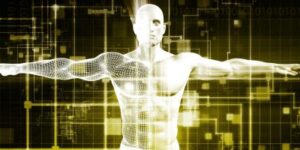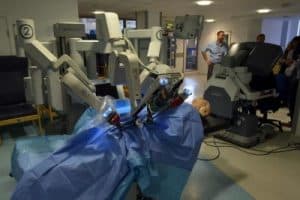- The Integration of Robotics in Medical Education and Training
- The Role of Robotics in Minimally Invasive Surgery
- The Role of Robotics in Automated Medical Imaging Analysis
- The Benefits of the Lokomat Robotic Device in Physical Therapy
- Robotics and Precision Medicine: Enhancing Drug Delivery Outcomes
- Robotics and Telemedicine: Enhancing Access to Healthcare
- The Future of Medical Imaging: Advancements in Robotics
Robots are transforming the way medical imaging and surgery are conducted. With the use of robots, procedures are becoming less invasive, more precise, and safer for patients. Robotic technology is used in various medical fields, from orthopaedic to neurosurgery, providing doctors with more advanced tools to improve patient outcomes.
The Integration of Robotics in Medical Education and Training
In 2019, a robot developed by Chinese researchers reportedly outperformed human doctors on a national medical licensing exam, scoring 456 points out of 600. The robot was trained to analyse and interpret medical images, such as computed tomography (CT) scans and X-rays, to give a diagnosis.
Several robots are currently being used in medicine and include:
- Da Vinci Surgical System performs minimally invasive surgery. It allows surgeons to operate with greater precision and control, resulting in smaller incisions, less pain, and faster patient recovery times.
- Hospitals use the RP-VITA robot to allow doctors to interact remotely with patients. It has a video screen that can display a live video feed of the doctor, allowing them to communicate with patients from another location.
- CyberKnife is used to perform radiosurgery, a radiation therapy to treat tumours and other medical conditions. It uses a robotic arm to deliver high doses of radiation to specific areas of the body.
- MiroSurge robotic system can perform highly precise microsurgery, allowing surgeons to operate on delicate tissues with greater accuracy and control.
- Rex is a robotic exoskeleton used to help people with mobility impairments to walk. Also, mimicking the human body’s movements allows users to walk more naturally and with greater ease.
Robotic surgery has become increasingly common in recent years. Surgeons can use robots to perform minimally invasive procedures with greater precision and control. In addition, these procedures can reduce pain, scarring, and recovery time for patients.
The Role of Robotics in Minimally Invasive Surgery
Robotic surgery has several advantages over traditional open surgery and other minimally invasive procedures, such as laparoscopic surgery. These advantages include the following:
- The robotic arms can move in ways human hands cannot, allowing for greater accuracy and control during surgery.
- Robotic surgery uses smaller incisions than traditional open surgery, which can lead to less pain, scarring, and a quicker recovery time for the patient.
- Robotic surgery is less invasive and can result in less blood loss during the procedure.
- Patients who undergo robotic surgery have shorter hospital stays and a quicker recovery time than traditional surgery.
Robotic surgery is used in the prostate, gynecologic, cardiac, and orthopaedic surgery. However, it is essential to note that not all surgeries can be carried out using robotic systems. Therefore, a qualified surgeon should decide to use robotic surgery based on the patient’s medical condition and individual needs.
The da Vinci Surgical System consists of a console where the surgeon sits and controls the robot and a patient-side cart that holds the robotic arms and surgical instruments. The system uses advanced 3D visualisation and precision instruments to enable surgeons to perform complex surgical procedures with greater precision and control than traditional surgical methods. The surgeon controls the robotic arms using hand and foot controls at the console while looking through a high-definition 3D camera that provides a magnified view of the surgical site.
Da Vinci robotic surgery can perform various procedures, including prostatectomy, hysterectomy, and colorectal and thoracic surgeries. The benefits of da Vinci robotic surgery include:
- The da Vinci system gives the surgeon greater precision and control than traditional surgical methods, which can lead to better surgical outcomes.
- Da Vinci robotic surgery uses smaller incisions than traditional surgery, which can lead to less pain, scarring, and a quicker recovery time for the patient.
- The da Vinci robotic surgery is less invasive and can result in less blood loss during the procedure.
- Patients who undergo da Vinci robotic surgery have shorter hospital stays and a quicker recovery time than traditional surgery.
The Role of Robotics in Automated Medical Imaging Analysis
Robots can analyse medical imaging scans such as X-rays, CT scans, MRI scans, and ultrasounds. However, these scans generate large amounts of data, making it difficult for doctors to analyse and interpret the information. By using artificial intelligence (AI) and machine learning algorithms, robots can help physicians to analyse and interpret medical images more accurately and quickly.
For example, AI algorithms can be trained to detect specific abnormalities or patterns in medical images, such as tumours or areas of inflammation. Therefore, AI can help physicians make more accurate diagnoses and effective treatment plans.
Robots can also analyse medical images in real-time during surgical procedures. For example, during brain surgery, a robot can analyse MRI scans to help the surgeon identify the tumour’s precise location or other abnormalities, improving the procedure’s accuracy and safety.
In addition to analysing medical images, robots can generate 3D models of organs or tissues based on medical images. These 3D models can be used to plan and simulate surgical procedures, which can help improve the procedure’s accuracy and safety.
Robots are becoming increasingly important in medical imaging analysis, as they can help physicians analyse and interpret large amounts of data more accurately and quickly, leading to better patient outcomes.
The Benefits of the Lokomat Robotic Device in Physical Therapy
Robots are increasingly used in physical therapy to assist patients with rehabilitation and recovery. For example, robotic devices can help patients to regain mobility, strength, and coordination following an injury, surgery, or other medical condition.
One example of a robotic device used in physical therapy is the Lokomat, a robotic gait training system that helps patients relearn how to walk. The Lokomat uses robotic leg braces to support the patient’s weight and robotic motors to move the patient’s legs in a natural walking pattern. In addition, the Lokomat can be programmed to adjust the support and resistance level based on the patient’s abilities and progress.
Another example of a robotic device used in physical therapy is the Armeo. This robotic arm exoskeleton helps patients regain movement and coordination in their arms following a stroke or other neurological injury. The Armeo can be programmed to provide varying levels of assistance and resistance to help patients to regain strength and control in their arms.
Robotic devices can also provide feedback and monitoring during physical therapy exercises. For example, a robotic device can measure the force and movement of a patient’s muscles during an exercise, which can help the therapist track the patient’s progress and adjust the therapy program as needed.
Robotic devices are becoming increasingly important in physical therapy, as they can help patients recover more quickly and effectively than traditional therapy methods. While robotic devices can be expensive and unsuitable for all patients, they offer a promising new approach to rehabilitation and recovery.
Robotics and Precision Medicine: Enhancing Drug Delivery Outcomes
Robots are increasingly used in drug delivery to improve drug administration’s accuracy, efficiency, and safety. One example of a robotic device used in drug delivery is the i.v.STATION is an automated system for preparing and dispensing intravenous (IV) medications.
The i.v.STATION uses robotic arms to prepare and label IV medications, which helps to minimise the risk of medication errors and contamination. The system can be programmed to ensure that the correct dose and concentration of medication are dispensed, which helps to improve the accuracy and safety of drug administration.
Another example of a robotic device used in drug delivery is the RIVA (Robotic IV Automation) system, an automated system for compounding sterile IV medications. The RIVA system uses robotic arms and advanced imaging technology to prepare IV medications in a sterile environment, which helps to minimise the risk of contamination and infection.
Robots can also deliver drugs directly to targeted areas of the body, such as tumours or diseased organs. For example, tiny robotic devices known as nanobots can be programmed to deliver drugs directly to cancer cells, which can help to minimise the side effects of chemotherapy and improve the effectiveness of treatment.
Furthermore, robots are becoming increasingly important in drug delivery, as they can help to improve the accuracy, efficiency, and safety of drug administration. While robotic devices can be expensive and unsuitable for all patients, they offer a promising new drug delivery approach that could help improve patient outcomes and reduce healthcare costs.
Robots can help provide care to patients, especially those who are elderly or have limited mobility. For example, robots can assist with activities of daily living such as feeding, bathing, and dressing.
Robots are increasingly used in patient care in a variety of ways, for example:
- Surgeons use surgical robots to perform minimally invasive procedures with greater precision and control, resulting in reduced patient pain, scarring, and recovery time.
- Rehabilitation robots help patients recover from injuries or disabilities by assisting them with exercises and movements.
- Telepresence robots allow remote doctors or specialists to communicate with patients and healthcare providers, providing virtual consultations, check-ins, and diagnoses.
- Delivery robots transport medication, lab specimens, or other items throughout healthcare facilities, reducing the risk of human error and increasing efficiency.
- Companion robots provide emotional support and companionship to patients, especially those in long-term care facilities or hospices.
- Cleaning robots sanitise and disinfect patient rooms, common areas, and equipment, reducing the risk of infection and disease transmission.
Robotics and Telemedicine: Enhancing Access to Healthcare
Robots are used in telemedicine to enable remote consultations between physicians and patients. This technology allows doctors to diagnose and treat patients far away or in remote areas.
Robots are increasingly being used in telemedicine to provide remote healthcare services to patients in various ways and including:
- Telepresence robots enable healthcare providers to connect remotely with patients, providing virtual consultations, check-ins, and diagnoses. These robots, equipped with cameras and screens, allow doctors to see and communicate with patients in real time, regardless of location.
- Diagnostic robots perform medical tests remotely, such as taking blood samples or measuring vital signs, allowing doctors to diagnose and treat patients from a distance.
- Pharmacy robots dispense medication remotely, providing patients with prescriptions without physical contact with a pharmacist.
- Surgical robots perform complex surgeries remotely, allowing surgeons to operate on patients from another location.
- Health monitoring robots track patients’ health remotely, such as their heart rate, blood pressure, and other vital signs, allowing doctors to detect any changes in their health and intervene as necessary.
- Telemedicine robots can improve patient access to healthcare services, especially in remote or underserved areas, while reducing healthcare costs and increasing efficiency.
The Future of Medical Imaging: Advancements in Robotics
The future of robots in medical imaging is expected to be highly transformative. Robotic technology has already made significant strides in medical imaging, and it is projected to play a critical role in the future.
One of the most significant advantages of using robots in medical imaging is their ability to perform exact and accurate procedures. Robots are programmed to perform highly complex and delicate operations, such as surgery or biopsy, with high accuracy and precision, leading to better patient outcomes and reduced risks.
Another advantage of using robots in medical imaging is their ability to work nonstop without needing rest or breaks. This can help increase productivity and reduce patient wait times, improving healthcare efficiency.
Robots can also be equipped with advanced imaging technology, such as high-resolution cameras and sensors, to provide highly detailed and accurate human body images. This can help doctors and clinicians make more informed patient care and treatment decisions.
You are here: home » medical imaging blog »

